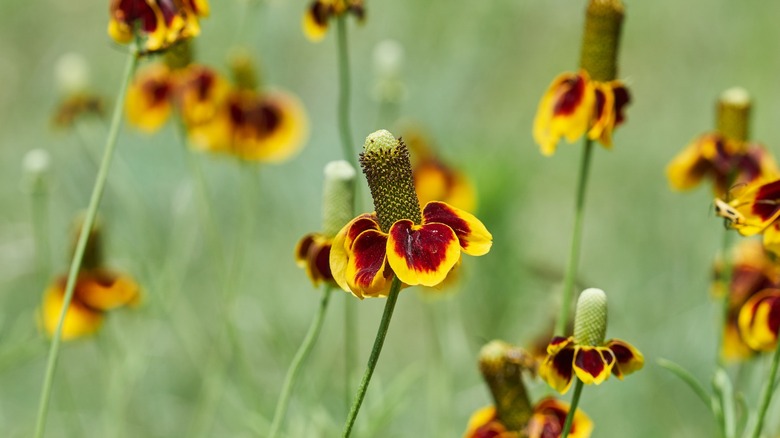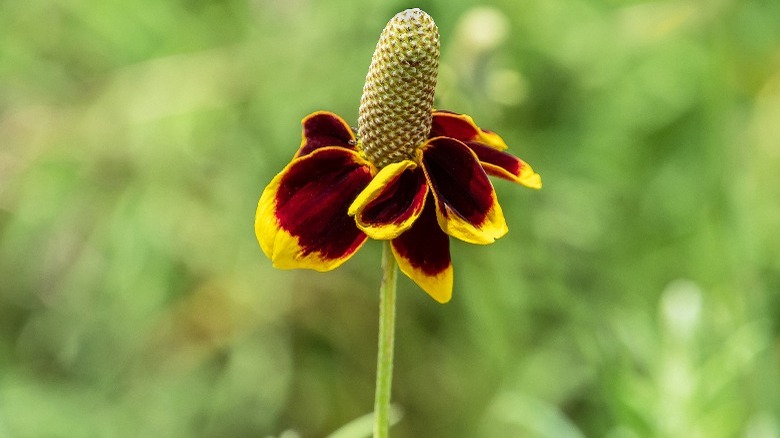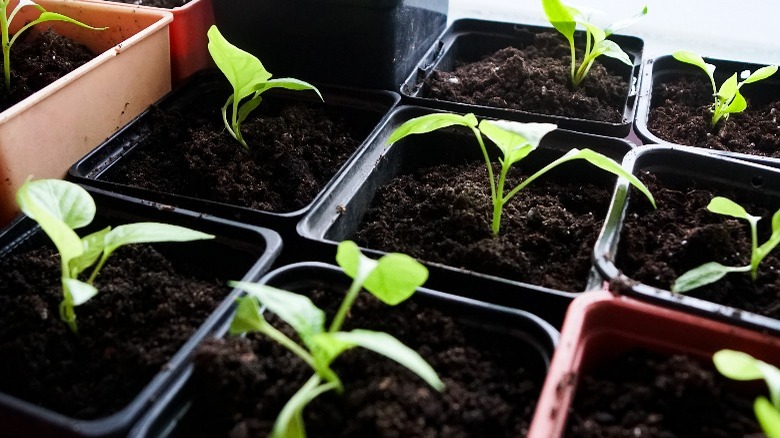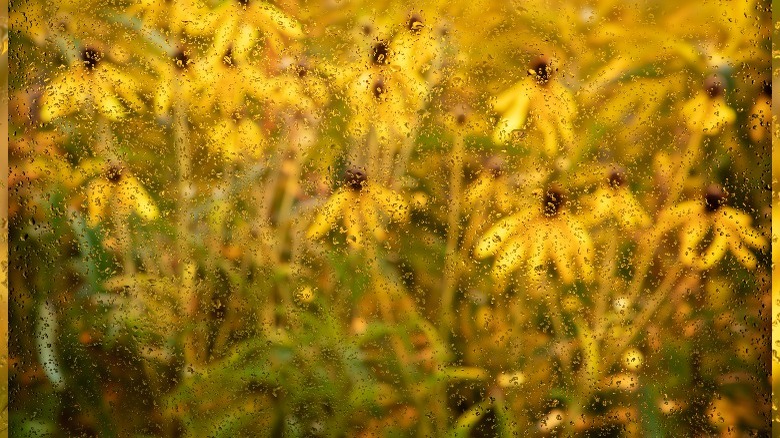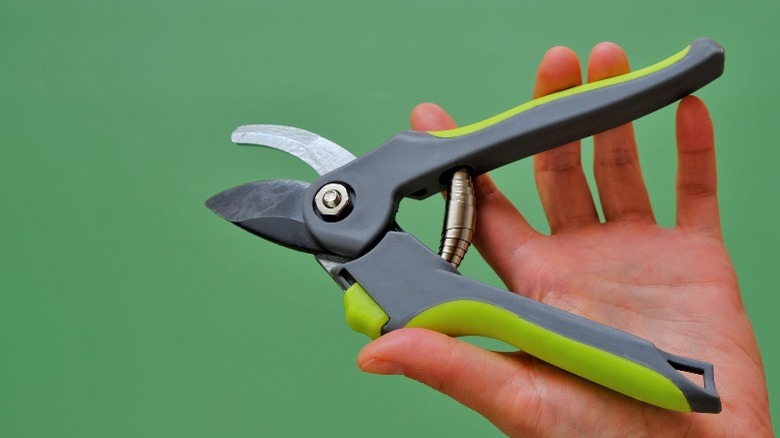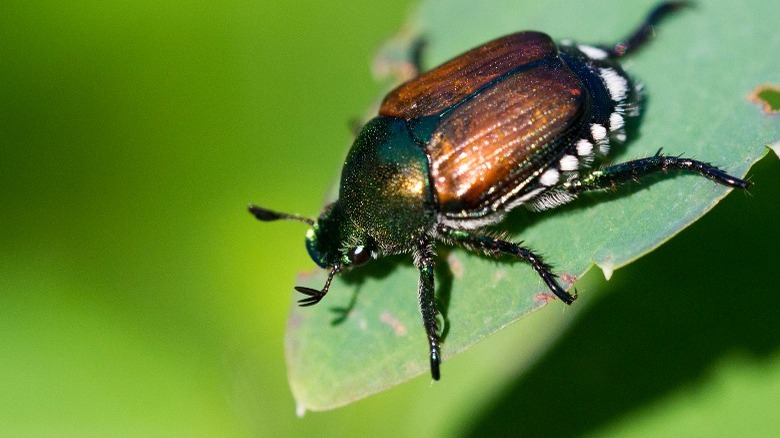Mexican Hat Plants: A Gorgeous Plant You Need In Your Garden This Summer And How To Care For It
We may receive a commission on purchases made from links.
Classic flowers like daisies and marigolds are charming and found in many a garden, but more unusual flowers like Mexican Hat plants can be even more enchanting. These eye-catching perennials can add interest to your landscaping this summer and they aren't hard to care for. And like so many other plants it goes by more than one name – its other monikers include Prairie Coneflower, Red-Spike Mexican Hat, and Thimbleflower. Its biological name is Ratibida columnifera and it belongs to the Aster family.
Mexican Hat plants are easy to care for and particularly well-suited for summer gardens because they are drought-tolerant and love the sun. The ornamental, brightly-colored flowers attract bees, birds, and butterflies and can last from the late spring until the early autumn. And since the stalks can be a few feet high, gardens benefit from the added height that balances out lower-growing flowers. Mexican Hat plants add interest to garden borders and cottage gardens, but can also be grown as wildflowers. They can also be raised indoors as potted plants, but why keep them out of the spotlight? You need this gorgeous plant in your garden this summer, and the payback is huge for the small amount of time and effort it requires.
What is a Mexican Hat plant?
Ratibida columnifera is a card-carrying member of the aster (Asteraceae) plant family. Different kinds of coneflowers or echinacea are part of this family and the Mexican Hat is categorized as a prairie coneflower. Its close relatives include marigolds, zinnias, daisies, and purple coneflowers.
This interesting-looking plant has flowers with long, slim, dark brown disks that protrude from the middle and measure up to 2 inches long. It sports three to seven petals that grow out close to where the disks meet the stems. The summer-blooming flowers can range in color from yellow to reddish mahogany or brownish purple. Ratibida columnifera grows up to 3 feet high, in clump-like forms, and its green foliage features pinnate leaves that can be up to 5 inches long. These plants are a common sight in the Great Plains and can be found growing on roadsides in dry environments.
The leafy lower parts aren't what gets all the attention, though. Those flowers are shaped like miniature sombreros and the yellow and red colors call to mind Mexican Day of the Dead themes. How cool is that?
Where to get Mexican Hat plants
Mexican Hat plants are most often grown from seeds. These can be ordered online and so can the plants. They are sometimes found at brick-and-mortar garden centers and home stores like Lowe's and Home Depot too, but it makes sense to call first and check since the selections change so often. It's also possible to find a packet of 2000 seeds at Walmart for just a few bucks, and High Country Gardens has offered potted Mexican Hat plants for less than $10.
Before shopping for these plants, be aware of another plant that goes by the same name. This is the hard-to-pronounce Bryophyllum daigremontianum, a succulent with a completely different profile. It also goes by several other names: Mother of Thousands, Alligator Plant, and Devil's Backbone. That plant doesn't have sombrero-like flowers, so it's wise to ask when calling around to find Mexican Hat Plants. But to make things a little less complicated, Ratibida columnifera only has one variety that's called Red Midget. For these purposes, the Mexican Hat plants referred to here will be the perennials with those lovely flowers.
USDA Hardiness Zones for Mexican Hat plants
Mexican Hat Plants are drought-tolerant because they have taproots. These vertical root systems grow far down to help plants access moisture that's deep in the ground. This makes these plants successful from an evolutionary standpoint: Ratibida columnifera's native range stretches from parts of Canada to the Great Lakes, and all the way down south to Texas through Arizona. Now, this hardy plant is well-established in most of the U.S.
The USDA Plant Hardiness Zone Map breaks the country down into growing zones for plants and is the go-to resource for gardeners who want to know which plants will thrive where. Mexican Hat Plants are in USDA Hardiness zones 4 to 9, which includes practically the entire U.S. plus parts of Canada and Mexico. These plants will die off in the fall and winter, once temperatures drop and there is frost on the ground.
Growing conditions
Like other flowering plants, Ratibida columnifera prefers locations that get full sun with an optimum temperature of 65 to 75 degrees F. But when it is consistently 90+ degrees out, the blooms usually wilt. These plants aren't that picky about the soil, though, as long as it's well-draining. Mexican Hat plants can thrive in calcareous soils as well as ones that contain clay and limestone but well-drained, sandy loam is best.
The optimum pH for Mexican Hat plants is 6.8 to 7.2. To put that into perspective, soil pH values generally range from 3.5 to 10 so this plant fits right in the middle, with neutral soils. If there is uncertainty about the soil's pH, a testing kit can be used. Other than that, these plants tend to be assertive and can take over garden space. They can nudge out weaker species, so give them plenty of room to spread out.
Sowing Mexican Hat plant seeds outdoors
Mexican Hat seeds can be sowed in the spring or fall, but the latter is recommended. They will not bloom until the second year but many gardeners collect the seeds from spent plants and sow them the following season to ensure yearly flowers. The seeds should be collected towards the end of summer after the flowers are finished, and gathering seeds from a few different plants instead of just one can lead to more colors in the new plants. Purchased and gathered seeds can be stratified for better germination, but this is not necessary. To do this, store them for nine weeks at 40 degrees F.
The seeds are quite small, so use a lot of them to get the best results. They can be raked into loose topsoil, but don't dig holes or cover them with dirt because they need light to germinate. If there are concerns about the seeds being blown away in the wind, they can be topped with a layer of vermiculite. When planting in the spring, prepare them a month in advance by mixing them with moist sand and keeping them refrigerated. The soil should stay moist after the planting, and the seedlings should start poking up out of the dirt in three to four weeks.
Starting seedlings indoors
It takes approximately three to four weeks for Mexican Hat plant seedlings to grow from seeds indoors. To do this, use seedling trays or pots and cover the seeds with a bit of soil. Then, place them in a sunny location and keep the soil moist. Once a few leaves appear, thin the seedlings out so there is one per pot. Once they have readjusted, they can be transferred outdoors in their pots to harden them off. Leave the plants outdoors for a short period of time initially and increase that over a few days until they are strong enough to be transplanted.
To plant container-grown perennials like these, dig out a hole that's twice as wide as the container and somewhat deeper. Lower the seedling into the hole, and refill it with soil amended with some compost. Newly planted Ratibida columnifera will appreciate a good watering but take care not to overdo it
Watering Mexican Hat plants
Since Mexican Hat plants are most at home in hot, dry environments, they have minimal watering needs for the most part. The seeds and seedlings should be watered regularly until they are fully established, so it's best to check the soil daily. More frequent watering might be needed during extended periods of drought, and adding mulch after planting can also help. Avoid watering them in the middle of the day or late afternoon when the sun is beating down because the moisture will evaporate before it can do the plant any good. The best time to water them is in the early morning or dusk.
Drip irrigation lines and soaker hoses work well for Mexican Hat plants because they reach through the foliage to get close to the bases. The watering can stop at the end of the season after the petals have dropped and the flowers have gone to seed.
Fertilizing Ratibida Columnifera
These hardy perennials usually don't need fertilizer since they adapt so well to many kinds of soil. Still, some gardeners may have better results with soil amendments, particularly when the pH falls outside the recommended range. Established Mexican Hat plants that are getting too much nitrogen might have fewer flowers and more green leaves, and fertilizers with higher concentrations of phosphorous might help these plants produce larger quantities of brightly-colored mini sombreros.
The best time to add fertilizer is early in the growing season to give the growth enough time to harden off before the end of the season. Slow-release perennial fertilizers need only be used once, but water-soluble ones generally go in every two weeks. Read the labels for specific instructions with store-bought fertilizers to make sure. To apply granulated fertilizer, sprinkle it into the ground and work it in gently with your hands or a small rake, and avoid getting it on the plants. Water the area, rinsing off any granules that got onto the foliage.
Pruning Ratibida Columnifera
These perennials have a long bloom time that can be extended with a bit of maintenance. Once the flowers are spent they can be deadheaded by snipping them off the stalks with a pair of gardening shears. It's important to be vigilant about deadheading in the plant's first year of growth because it redirects the plant's energy toward developing new flowers and strong roots. Only use sterilized garden tools, because diseases can easily be transferred between plants. This should be done with 70 to 100 percent isopropyl alcohol – either soak the tools or give them a good wiping-down before using them.
Overgrown Mexican Hat plants can also be thinned out in order to prevent them from overtaking gardens. This can prevent fungal diseases like powdery mildew. And after the plants have died out, they can be cut down to the ground and will be dormant until the warm weather rolls back around.
Dealing with diseases and pests
Mexican Hat plants are not prone to most of the diseases that other plants can succumb to, and the foliage has a smell that deer tend to avoid. Other than mildew growth that could occur from overgrowth, the only other remarkable disease is too much moisture in the soil which could lead to root rot. Keep the soil moist but not soggy to prevent the latter.
Coneflowers like Mexican Hat plants can be infested by some insects, but these are not major problems. Japanese beetles are sometimes attracted to them and will munch away at the flower petals. This won't damage the plants but the holes aren't pleasant to look at. Japanese beetle traps can work, and the insects can be plucked off by hand, too. Eryophyid mites also cause cosmetic damage to coneflowers, causing deformed growth. These little invaders can also be picked or flicked off.
